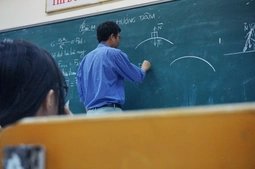Advanced technologies have increased the application of artificial intelligence for a number of objectives in the quickly changing digital world. AI writing tools that generate text like humans are prominent among these applications. These tools produce content, making suitable content identification methods crucial.
AI detectors are on the frontline of distinguishing human-generated from machine-generated content. The emergence of AI writing detectors has significantly impacted digital content integrity by clarifying its origin.
Selecting the best AI detectors can be difficult for people and companies due to the many possibilities. AI detectors' functions, uses, problems, and future are covered in this article. Readers will learn how AI writing detectors ensure digital content authenticity through this exploration.
What does AI writing detection mean?
AI writing detection uses advanced technology to determine if the text is human-written or created by an AI writing tool. This process is essential for maintaining the integrity of written content in academic research, digital journalism, and creative writing, as well as copyright protection and ethical content creation. AI writing detection relies on detailed analysis of syntax, semantics, and stylistics. This approach helps identify subtle and complicated human writing from formulaic and programmed AI outputs.
AI writing detection systems with plagiarism checkers provide another layer of inspection, improving their utility. These checkers may detect nuanced mimicking and paraphrasing as well as verbatim copies. These tools can detect hidden plagiarism by comparing the material under review to an extensive database of previous content, reinforcing content production and publication ethics.
The creation and implementation of AI detectors that recognize generated content advances content verification technologies. Integrating machine translation, some detectors assess AI writing tools' text-generating algorithms using advanced machine learning models and data analysis. AI content-generation methods commonly use repetitive language, unnatural coherence, and odd syntactic fluctuations. Thus, they look for these. In an age when AI writing tools can resemble human writing, these detectors must be sophisticated enough to discern between human and AI-generated content.
How do AI detectors work?
How do AI content detectors work? Digital content authenticity relies on AI detectors to distinguish between human and machine-generated text. A sequence of complex procedures uses cutting-edge technology and advanced analysis to identify written material's origins accurately.
Step 1: data collection and analysis
At the start, an AI text detector collects and analyzes massive datasets with a balanced mix of human-written and AI-generated texts. This crucial phase gives AI detectors an extensive library of linguistic patterns, styles, and nuances from both writing sources. AI writing detectors can recognize AI content-generating technologies' unique fingerprints by carefully evaluating these elements, enabling more detailed identification.
Step 2: feature extraction
After data collection, AI detectors carefully extract linguistic and stylistic elements from the collected texts. Like a forensic examination, each sentence, word choice, and grammatical structure is examined for AI authorship. The goal is to create a profile that captures what distinguishes AI-written content from human-written literature. This nuanced grasp of textual traits is crucial for detectors to identify writing sources reliably.
Step 3: machine learning model training
The best AI detectors advance to machine learning model training with a wealth of features. This phase teaches models to distinguish human and AI writing fingerprints. The models are trained, evaluated, and refined using algorithms that learn from the dataset's complexities through trial and error. The goal is to use feature extraction insights to make the detector accurately recognize AI-generated material.
Step 4: application and detection
After training, the AI writing detector is ready for use. When a new text is submitted for analysis, the detector uses its learned models to compare it against AI-generated writing standards. This comparison lets the detector determine if the content resembles machine authorship, indicating suspected AI-generated texts for additional assessment.
Step 5: continuous learning and updating
AI detection technology must acknowledge that AI detectors are not accurate in all cases. New tools and strategies improve AI content generation capacity to replicate human writing. To counter this, AI writing detectors must constantly learn and adapt. These solutions stay ahead of the curve by upgrading their databases with new AI-generated information and refining their detection algorithms to ensure accuracy and reliability in a quickly changing digital environment.
Are AI detectors accurate?
Answering the question, "Are AI detectors accurate?" requires comprehending the complexity of identifying human and AI-authored texts. AI detection technology has improved accuracy, but difficulties remain. Diversity of training data, sophistication of analytical models, and emerging AI authoring tools affect AI detector accuracy. While AI detectors are powerful tools for identifying AI-generated material, their efficacy is constantly tested by AI content-generating innovation.
Can AI detectors be wrong?
The introduction of AI writing detectors has dramatically improved our ability to distinguish human-generated content from AI-generated text. These technologies use complex algorithms and large datasets to find minor differences between AI-generated and human-written content. Despite technological advances and system sophistication, can AI detectors be wrong?
Yes, AI detectors can make mistakes. This error risk comes from various elements that affect these systems' performance and accuracy. Complex and diverse human language can provide issues, as colloquial idioms, innovative writing styles, and subtle situations may mimic AI-generated text.
The accuracy of an AI detector depends on the algorithm and slassification, the quality and diversity of the training data, and the growing capabilities of AI authoring tools. AI technology and text generation methods are improving, which can make it difficult for even the most advanced detectors to classify.
The question "Is this AI generated?" sometimes arises when text is confusing or combines human and AI writing styles. AI detectors may encounter problems making a decision, resulting in false positives or negatives. This ambiguity emphasizes the need to constantly improve and update AI detectors to keep up with AI writing technologies.
However, how AI writing detectors are used affects their usefulness and technological capabilities. Users must appreciate these tools' strengths and weaknesses, noting that no tool is perfect and findings should be interpreted cautiously.
In conclusion, AI writing detectors improve our capacity to distinguish human and machine-generated information, yet they have limits. These technologies need continual research, development, and refining to improve accuracy and dependability due to the possibility of inaccuracy. As we learn more about AI-generated language, AI detectors will change to represent the dynamic relationship between human creativity and technical innovation.
What are AI detectors used for?
The rapid growth of artificial intelligence (AI) technology led to the creation of AI detectors in the digital age. These detectors identify AI-generated content, protecting human-created content across industries.
AI detectors, incorporating networks and neural methodologies, are needed in academia due to the rise of AI essay and research paper writers. Universities use these techniques to verify student work's originality, protecting academic honesty and valuing intellectual achievements.
Digital content creation heavily relies on AI detectors to distinguish human creation from AI-generated content. Since AI can write compelling articles and creative works, publishers and content platforms use these detectors to verify human origin. It is about copyright and protecting the human element in works that genuinely connect with audiences. News authenticity and trustworthiness are crucial in journalism. In an age of quick information transmission, journalists and news agencies use AI writing detectors to ensure their reports are human-written, retaining confidence and accuracy.
With the complexity of identifying humans from AI-generated content, it becomes evident that human writing's authenticity and inventiveness are irreplaceable. When looking for assistance in writing original, high-quality content, reading college paper writing service reviews is a good option. These reviews can help you find reliable services like speedypaper.com and writepaperfor.me, which use talented writers to create distinctive, engaging, and personalized material that stands out in a digitally saturated world. Professional writing services ensure originality, integrity, and a human touch in academic, journalistic, and creative writing.
If you don’t know how to tell if something is written by AI, AI detectors solve the question. These systems analyze AI output writing patterns and stylistics using complicated algorithms. This distinction becomes more important as AI writing tools improve, blurring the borders between human and machine-generated work.
Best tools to detect AI writing
In the quest to distinguish AI-generated content from human-authored texts, various tools have been developed. These AI writing detectors come in different forms, each with its unique methodology and area of expertise. They are designed to analyze text and provide insights into whether an AI likely generates the content. Here are some of the most notable tools in this domain, along with their descriptions and examples of use.
- Turnitin: Turnitin, mainly used in academia, detects plagiarism. AI-generated content detection has also been added. Turnitin can identify non-human content by evaluating writing style and comparing it to a massive student paper database. Teachers who want to ensure student work originality can benefit from this tool.
- GPTZero: This tool is popular for recognizing GPT-4 writings, one of the most potent AI writing models. GPTZero's unique technique assesses text complexity and word and sentence predictability. The assumption is that AI-generated content lacks the unpredictability and intricacy of human writing. Though new, this technique has shown promise in recognizing AI-generated content.
- Copyleaks: As an artificial intelligence detector, Copyleaks goes beyond plagiarism checking. It analyzes phrase patterns and writing styles using advanced AI and machine learning methods. Copyleaks helps publishers and content creators verify their material by identifying AI-generated content.
Technology evaluations often dispute AI checkers' accuracy. AI detector accuracy depends on content generation model complexity and detection tool sophistication. Supervised and unsupervised approaches can detect evident AI writing, but they may struggle with more complicated AI outputs. Staying current with AI writing requires updating and improving these tools.
The future of AI writing
AI writing is poised for dramatic change. The proficiency of AI in language generation is rising rapidly, resulting in more AI-generated content. It raises problems regarding the authenticity and originality of digital information and the efficacy of AI writing detectors in protecting human authorship.
Understanding how AI writing detectors work helps predict their development. These detectors discover AI-generated content patterns by analyzing sentence structure, complexity, and writing style. These detectors must use more complicated algorithms and learning models to keep up with AI authors.
The importance of AI writing detectors is predicted to grow. These detectors must identify AI-generated content and adapt to new AI writing models as AI becomes more human-like. This adaption requires continual AI detection research and development.
Research is also being done on how do AI checkers work in complex situations. To effectively distinguish AI from human writing, AI checkers must use more profound language and semantic analysis as AI models become more advanced. It may require including contextual understanding, emotional nuance, and cultural references — human factors in writing.
Finally, AI writing and detection are changing. More advanced AI writing detectors will be needed as AI-generated material improves. As we learn more about AI checker's work, the interaction between AI writing and detection technologies will be crucial. It will protect the authenticity and integrity of human-created work when AI blurs digital writing lines.




